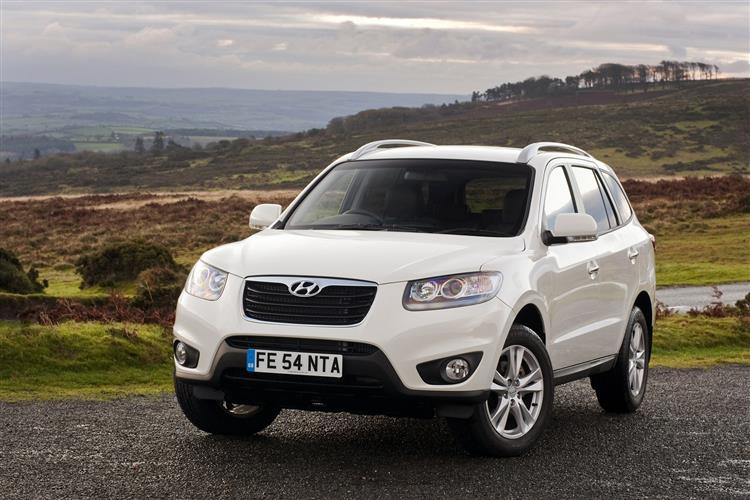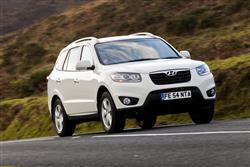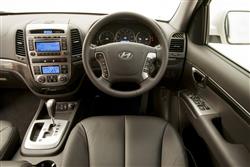SEOUL POWER (some text hidden) --NONE--
By Andy Enright
Introductionword count: 122
Hyundai used to be a prime exponent of the 'pile it high and sell it cheap' philosophy. The cars were built down to a price and not particularly sophisticated but they were well screwed together and exceptionally reliable. The company has retained that essential sturdiness of build but of late has backed it up with slicker designs and this has helped enhance the inherent equity of the badge. Buy a Hyundai now and it's no longer like shopping at LIDL. For evidence of this, look no further than the Hyundai Santa Fe. This facelifted model was launched in 2010 and shows just how far the company has come in a short space of time. Here's what to look for when buying used.
Modelsword count: 7
5 dr 4x4 (2.2 diesel [Style, Premium])
Historyword count: 152
When the second generation Hyundai Santa Fe arrived in 2006, it did something very subtle but very smart. It blurred the boundaries between the compact Freelander/RAV4 class and the family Discovery/Shogun segment. Santa Fe buyers paid compact sector prices but got the kind of 7-seat capacity they'd previously needed a much larger SUV for. Not surprisingly, it's a concept that's since been copied by plenty of rivals - including Hyundai's partner Kia whose Sorento's class-leading 2.2-litre diesel engine the Santa Fe shares. The model we're looking at here got a freshen up in 2010 with the facelift giving the curvy lines a new lease of life. The front end's smarter, with its sleeker grille, revised bumper and redesigned lights. Follow the rising waistline to the rear and you'll find that the lamps are tweaked here too, the finishing touch to a shape seemingly more compact than a 7-seater SUV ought to be.
What You Getword count: 328
There's some serious versatility here, as the Santa Fe was sold in either a five or a seven-seat guise. The five-seat option saves you a few hundred quid and gives you lots of extra luggage space, both above and below the rear cargo floor. Nevertheless, almost all Santa Fe buyers ignore it. After all, being able to allow the kids to bring a couple of extra school friends home or invite granny on the Sunday afternoon jaunt to the garden centre is a nice option to have. If it's granny, she'll need to be an understanding sort. I've been calling this car a 7-seater, but it's probably more accurate to call it a 5+2. In the first place, you need to be reasonably able-bodied to get through to these rearmost seats and once there, limited headroom means that only small children will be really comfortable. All right, so what about the centre row? Well, legroom could be better (fitting 7 seats into a car of this size has to tell somewhere), but it'll be fine for two adults, though a bit of a squash for three. Take a seat up-front and those familiar with the original version of this model will notice that trim materials in the cabin have been modernised, with the dreaded faux-wood inserts that Hyundai once mistakenly thought classy taking their rightful place in the skip. Instead, there's carbon black detailing which looks much more up to date. Soft-touch plastics are noticeable by their absence but it all feels solidly constructed and the driving position has enough adjustability to ensure decent comfort for all but the longest-limbed drivers. Luggage space should be quite sufficient, even for the most active families. That's provided you're not using all seven seats of course. Still, fold the two extra boot-mounted seats down and there's 969-litres to play with, a figure which then rises to 2247-litres if you fold the middle row down to create a completely flay loading bay.
To see the full road test text contact us on 0330 0020 227
Pictures (high res disabled)

.jpg)
|
.jpg)
|
.jpg)
| |||
.jpg)
|
.jpg)
|
.jpg)
| |||

|
.jpg)
|
.jpg)
| |||
.jpg)
|

|
Scoring (subset of scores)
Category: Crossover or SUV 4x4s
| Performance | |
| Handling | |
| Comfort | |
| Space | |
| Styling, Build, Value, Equipment, Depreciation, Handling, Insurance and Total scores are available with our full data feed. | |



